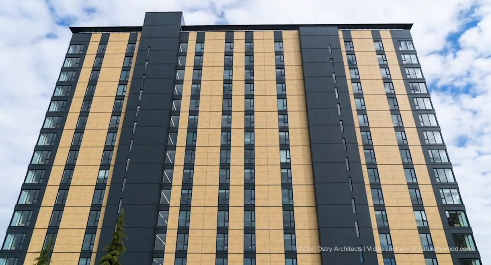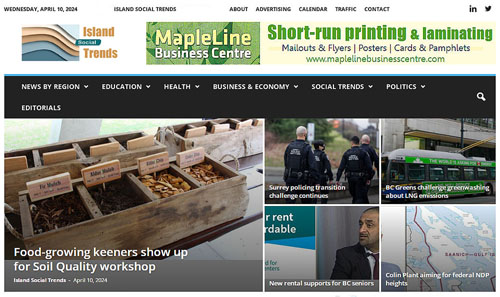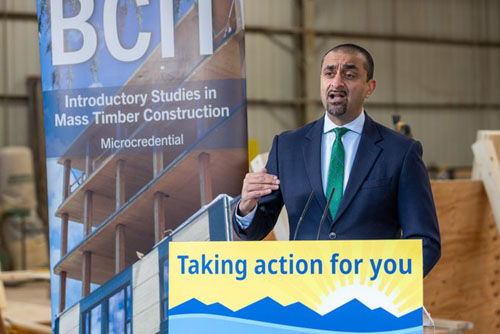
Wednesday April 10, 2024 | VICTORIA, BC
by Mary P Brooke | Island Social Trends
This morning, the BC Building Code was updated with regard to the use of mass timber.
BC Housing Minister Ravi Kahlon announced that — effectively immediately — mass timber can be used to:
- Allow for 18 storeys (residential and office), up from 12 storeys
- Allow for up to 9 storeys without drywall.
- Allow for different building structures – like schools, libraries, retail, light- and medium-industrial occupancies, and care facilities.
B.C. builders can now use mass timber in taller buildings
Full BC Ministry of Housing news release – April 10, 2024
Updates to the BC Building Code will benefit people in the building and housing sectors with the expanded use of mass timber in taller buildings, as well as schools, libraries and retail.
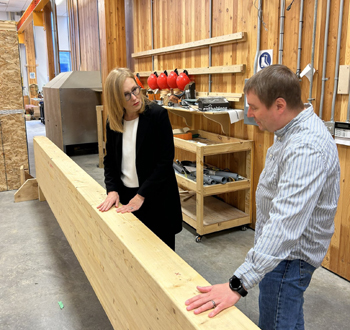
The Province is adopting building-code changes to permit the use of mass timber in buildings, such as schools, shopping centres and housing, so they can be built faster and more sustainably.
“These changes will help reduce carbon pollution, support the forestry sector, create jobs, build more homes and lead to more vibrant communities,” said Ravi Kahlon, Minister of Housing. “We know mass timber looks great, and now we can use it in larger buildings and more types of buildings.”
The mass-timber updates to the BC Building Code, now in effect, will:
* enable taller encapsulated mass-timber construction (EMTC) buildings with as many as 18 storeys for residential and office buildings, an increase from the previous 12-storey limit;
* expand EMTC to new building types, such as schools, libraries, retail, light- and medium-industrial occupancies, and care facilities; and
* allow for more exposed mass timber in buildings, based on a building’s height and use, such as residential buildings with as many as eight storeys.
“This is another step forward for British Columbia’s world-class mass-timber sector as we continue to accelerate the adoption of this strong, clean building technology,” said Jagrup Brar, Minister of State for Trade, and chair of the Mass Timber Advisory Council. “Through our Mass Timber Action Plan, we are diversifying both our forestry and construction industries to build a strong, clean and sustainable economy that works for people.”
The BC Building Code changes for mass timber were developed by a national joint task group co-chaired by B.C. and Quebec. The code changes were reviewed by an expert technical advisory group that included representatives from multiple provinces, the fire services community, fire safety engineers, technical building code experts, regulators and industry.
Other provinces are expected to follow B.C.’s lead and adopt these changes into their building codes. The code changes will be submitted into the national code system for future consideration for the national building codes.
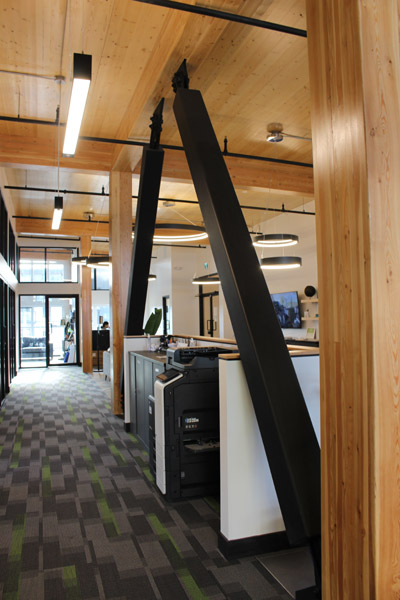
Advancing mass-timber technology is part of the Province’s Homes for People action plan, to address the housing crisis through a variety of innovative approaches, including in the construction sector. This means embracing new technologies like digital design, mass timber and prefabrication to cut down on construction times and on-site labour needs to build more housing faster.
The Province has also focused on increased density in urban areas through small-scale multi-unit housing and transit-oriented development, creating more mass-timber opportunities to build homes more quickly with a lower carbon footprint.
Mass-timber innovation is part of government’s work to streamline and expedite provincial housing permits and authorizations, while stimulating economic growth, part of a $19-billion housing investment by the B.C. government. Since 2017, the Province has nearly 78,000 homes delivered or underway.



